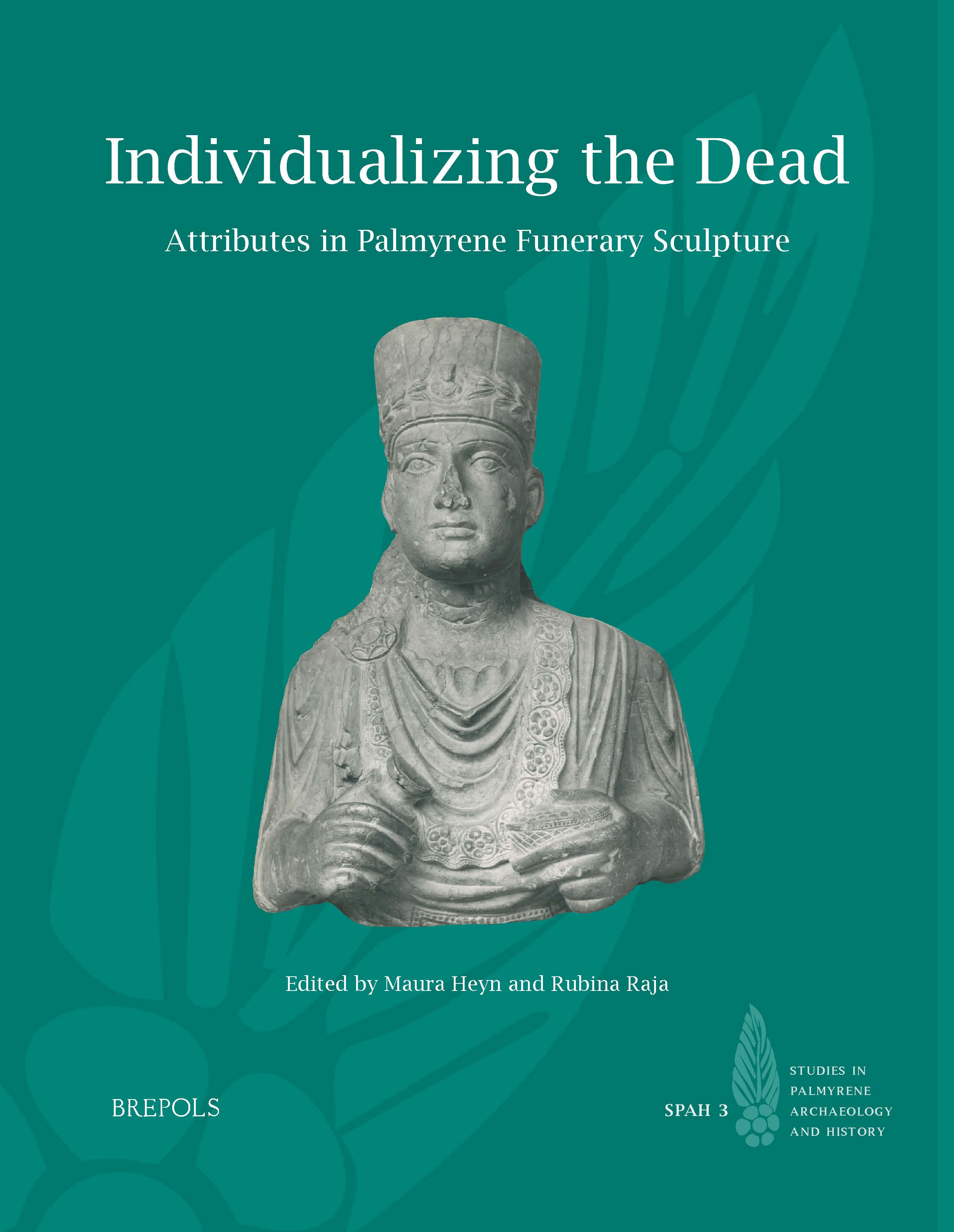Individualizing the Dead: Attributes in Palmyrene Funerary Sculpture
New volume in the book series “Studies in Palmyrene Archaeology and History”, edited by Professor Maura K. Heyn (UNC Greensboro) and Professor Rubina Raja.

Heyn, M. K. & Raja, R. (eds.) (2021). Individualizing the Dead: Attributes in Palmyrene Funerary Sculpture, Studies in Palmyrene Archaeology and History 3, Turnhout.
The latest volume of Studies in Palmyrene Archaeology and History has just been published. It brings together eight contributions that examine and shed light on how attributes were used by Palmyrene sculptors and patrons in order to express social cohesion and group identity, as well as to demonstrate individuality.
A range of choices when conceptualising a portrait
In the first three centuries of our era, thousands of Palmyrene relief portraits were sculpted. The oasis city of Palmyra prospered, and those who had the necessary means would make sure to have the portraits of their deceased family members sculpted in stone – portraits that would adorn the elite graves in the city. The portraits represent Palmyrene men, women and children, and they express a range of things about the inhabitants of this ancient city. The Palmyrenes individualised the portraits, and an important part of this individualisation is the attributes that the deceased are depicted with. Multiple choices were available to commissioners of art works in Palmyra, and in the portraits we see Palmyrenes holding keys, weapon, fruits, utensils used in the domestic sphere and for writing, as well as banquet tableware. Also jewellery, clothing and inscriptions set the specific portrait apart from other portraits. With a range of possibilities for creating variation in the portraits, the sculptor was able to create portraits that expressed exactly what the customer wanted. Specific attributes could express social status, wealth, identity, and professions and skills.
In-depth exploration of attributes
The new publication brings the attributes into focus. Through eight contributions different attributes are investigated, and their meaning are discussed. How and why were they used by both artists and their patrons? Why are some attributes rare, while others appear again and again? And which messages do the different attributes send? Social cohesion and group identity could be expressed, individuality could be demonstrated, and knowledge about the world outside of Palmyra could likewise be made clear through the portraits. While most of the contributions look into rare and common attributes in the portraits, one contribution highlights the iconography found on Palmyrene local coinage. This is another display of Palmyrene identity and an important comparative material. The last contribution is concerned with the epigraphic habit of the city and looks into the lack of mention of attributes and professions in the inscriptions from the city.
Book series: Studies in Palmyrene Archaeology and History
Individualizing the Dead: Attributes in Palmyrene Funerary Sculpture is the third volume within the double-blind peer-reviewed book series Studies in Palmyrene Archaeology and History (Brepols), initiated by Rubina Raja. The book series will provide a stage for edited volumes and monographs on the city of Palmyra and draw together international research on areas such as archaeology, history, historiography and cultural heritage.
Read more about the new publication on Brepols Publishers’ website here.
Read more about the new book series Studies in Palmyrene Archaeology and History here.
Read more about the Palmyra Portrait Project here.
